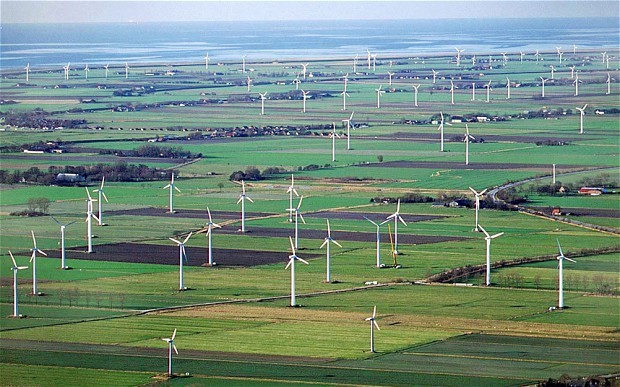The Rise of Retail Clean Energy Investing
Post on: 5 Июнь, 2015 No Comment

In recent years at Clean Edge, we’ve been tracking and reporting on three major shifts in clean-tech investing: 1) the shift to expansion-stage corporate and institutional investing from early-stage venture capital; 2) the shift from equity investments in technology companies to debt finance for projects; and 3) the advent of investment vehicles for retail investors.
In our 2012 book Clean Tech Nation. we talked about the need to leverage proven investment tools from the oil, gas, and real estate sectors, such as master limited partnerships and real estate investment trusts (REITs). Back then, such vehicles were basically non-existent for renewable energy and clean-tech investors. But fast-forward two years the landscape for clean-energy financing vehicles geared to retail investors has changed dramatically.
There are now more than a half dozen yieldcos and REITs available to retail investors. These tools, which enable individuals to invest in publicly traded stocks which invest in renewables infrastructure and deployment, now include Hannon Armstrong Sustainable Infrastructure (HASI), Brookfield Renewable Energy Partners (BEP), Pattern Energy Group (PEGI), Terraform Power (TERP), NRG Yield (NYLD), Abengoa Yield (ABY) and NextEra Energy Partners (NEP). These vehicles enable investors to capture both yield/dividends and the potential upside, or downside, of a publicly traded stock. Clean Edges CELS stock index, which tracks U.S.-listed clean-energy pure plays, now contains two of these companies, HASI and PEGI.
When Clean Edge launched CELS, its first stock index, back in 2007, there were only a handful of players. There are now approximately a dozen U.S. and globally focused exchange traded funds (ETFs) based on clean-tech and renewable energy indexes, from such ETF providers as First Trust, Guggenheim, iShares, and PowerShares. Assets under management stand at more than $600 million collectively (as of October 28, 2014) among three of the leading ETFs in the sector: solar-focused TAN ($337M), clean-energy focused PBW ($159M), and QCLN ($109M), the fund based on Clean Edges CELS index.
But clean-energy stocks havent been without their volatility. As we reported in our Clean Energy Trends 2014 report, annual performance has often outperformed the major benchmarks in up markets, but has also shown greater declines during bear markets. Clean Edges CELS index, for example, was up 67 percent in 2007, down 66 percent in 2008, up 44 percent in 2009, nearly even at 2 percent in 2010, down 41 percent in 2011, down 2 percent in 2012, and up a record 89 percent in 2013.
While stock investing can come with the aforementioned volatility, the promise of steady income-type investment vehicles has been on the rise as well. Green bonds for institutional investors have increased dramatically in recent years: up from less than $1 billion in new issues in 2007, to $3 billion in 2012 and $11 billion last year. In the first eight months of 2014, the sum was close to $30 billion, more than twice as much as in 2013 as a whole.
More recently, additional bond and bond-like investment opportunities for retail investors have opened up as well, providing a potentially new source of capital. Mosaic, the first company to leverage crowdfunding for solar projects, has issued state-focused offerings for investors interested in financing local solar projects, selling in increments as small as $25. To date, their offerings have primarily been limited to residents of California and New York, with interest rates averaging between 4.5 and 7 percent for five- to 10-year terms. The companys offerings are usually in the $100,000 to $400,000 range. and have been very popular with investors, reportedly filling up within days. In mid-October, SolarCity launched the nations first retail Solar Bonds, available to residents of all 50 states with rates ranging from 2 percent for a 1-year term to 4 percent for a 7-year term. SolarCity plans to issue up to $200 million worth of solar bonds with these first offerings, with more likely to follow.
Investors, of course, will need to weigh the risks of such offerings. But the opening up of debt securities to retail investors, especially impact-oriented ones looking for double bottom line returns, is compelling. As solar power, energy storage, microgrids, and other innovations displace the 20 th century centralized utility with a 21 st century distributed model, well need retail-investor-focused financing vehicles to help get us there.
Lead image: Money via Shutterstock














